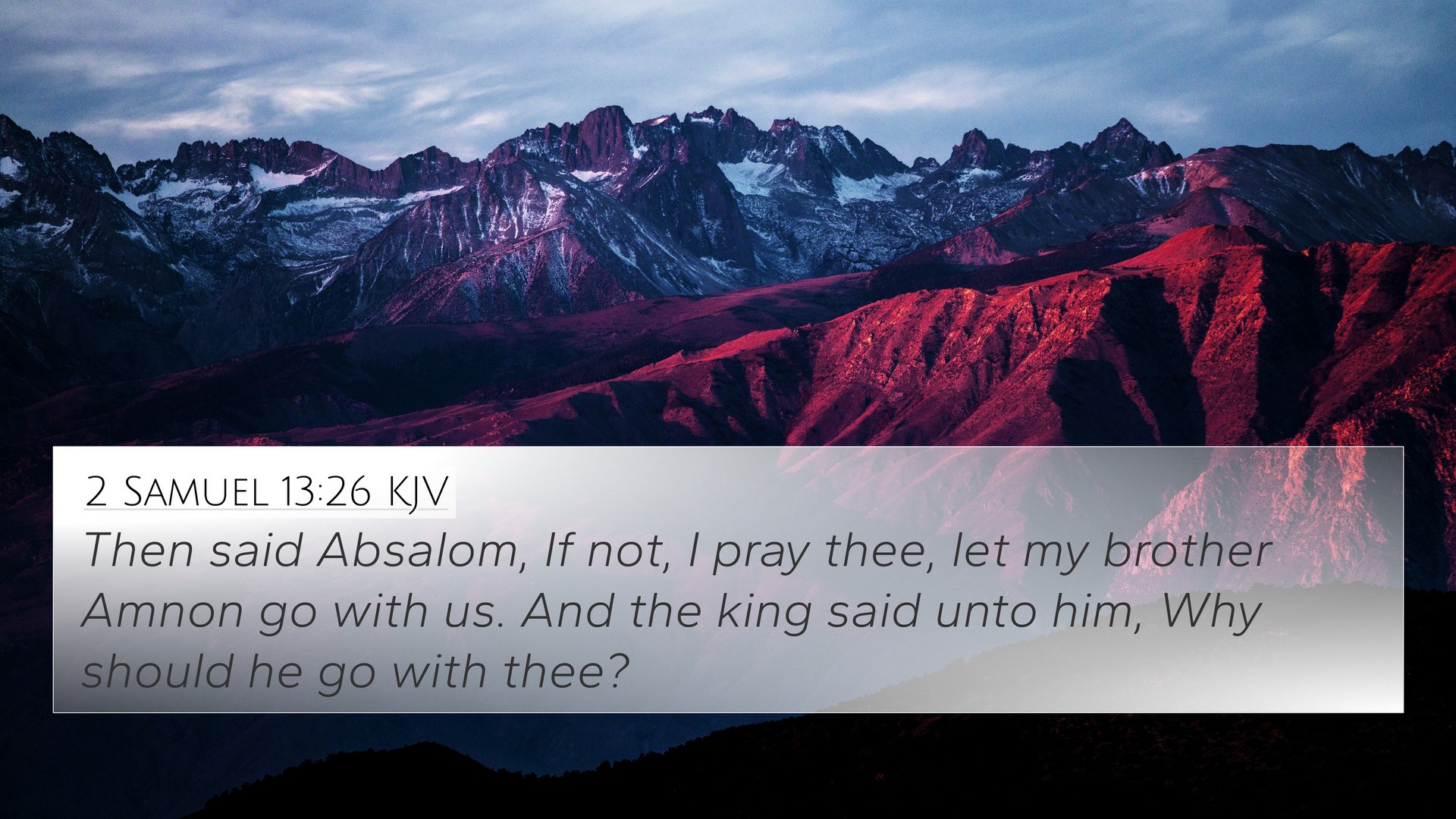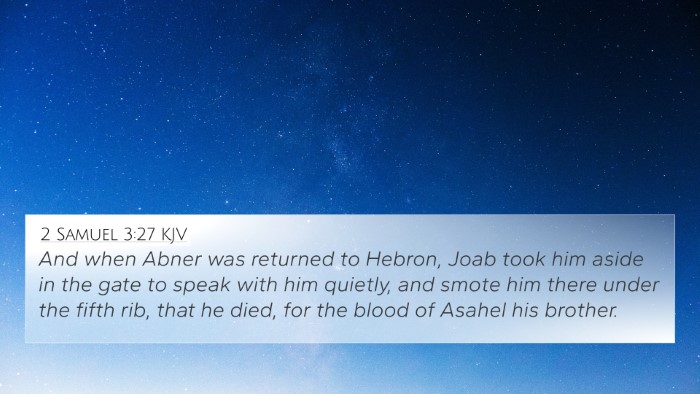Understanding 2 Samuel 13:26
2 Samuel 13:26 states: "But Amnon said, "No, my brother, do not make me go! For everything that you do in this matter is like you are forcing me." This verse deeply reflects the inner turmoil and conflict surrounding the characters involved, particularly Amnon and Absalom. The surrounding narrative provides a significant backdrop that enriches our understanding of this complex situation.
Context and Summary
In this chapter, we witness the tragic consequences of sin and familial strife within King David's household. Amnon, driven by lust, has committed a grievous act against his half-sister Tamar. The aftermath leads to a sequence of events that escalates into deep-seated hatred and revenge, primarily between Amnon and Absalom, Tamar’s brother.
Commentary Insights
-
Matthew Henry: Henry highlights the moral depravity displayed in this verse, pointing out the desperate pleas underlying Amnon's statement. Amnon's reluctance reflects an awareness of the sinfulness of his actions, yet he is ensnared by his desires. Henry suggests this illustrates the insidious nature of lust, which leads to ruin and ultimately death.
-
Albert Barnes: Barnes emphasizes the tragic elements of Amnon's character. He points out that Amnon’s reluctance could indicate a moment of shame or fear—fear of Absalom’s wrath and shame over the condition of his heart and actions. Barnes notes that sin often brings a person to a state where they are trapped in their own devices, leading to a cycle of emotional torment.
-
Adam Clarke: Clarke provides an in-depth analysis of the familial relationship dynamics and suggests that Amnon’s plea is not just a request for leniency but also an acknowledgment of the wickedness of his previous actions. Clarke also discusses the broader implications of conflict within families, which can echo throughout generations, leading to catastrophic results.
Bible Cross-References
Several verses echo themes present in 2 Samuel 13:26, offering insight into the nature of sin, desire, and familial conflict. Here are some related verse references:
- Genesis 34:2-3: The account of Shechem and Dinah, reflecting similar themes of lust and violation.
- Leviticus 18:9-11: The laws regarding incest that outline the seriousness of Amnon’s sin.
- Proverbs 6:32-33: Insights into the consequences of sexual immorality and its destructive nature.
- 1 Corinthians 5:1: A New Testament reference highlighting the issues of immorality within the church.
- Galatians 6:7-8: The principle of sowing and reaping, illustrating that sin inevitably leads to consequences.
- Matthew 15:19: Jesus speaks about the heart's condition, indicating that evil thoughts lead to sinful actions.
- James 1:14-15: The process of temptation leading to sin and ultimately death, paralleling Amnon’s experience.
Thematic Connections
The themes explored in 2 Samuel 13:26 do not exist in isolation; they resonate throughout the Bible, reflecting God's moral standards and human shortcomings. Notable connections can be drawn between:
- The Human Condition: The struggle against sin is depicted throughout scripture, linking the personal failures in 2 Samuel to broader Biblical narratives.
- Familial Relationships: The dynamics of family conflict appear in various passages, highlighting the impact of sin on personal relationships (e.g., Joseph and his brothers in Genesis).
- Divine Justice: Several verses address the consequences of sin, suggesting that God's justice prevails amid human turmoil (e.g., Psalm 37).
Conclusion
In summary, 2 Samuel 13:26 serves as a poignant reminder of the necessity of moral integrity and the devastating impact of sin on human relationships. It provides a window into the complexity of desire, shame, and familial breakdown. By employing tools for cross-referencing and connecting biblical themes, we not only gain a deeper understanding of this specific verse but also of its place within the larger tapestry of Scripture.
Additional Study Resources
- Utilize a Bible concordance to explore related themes and verses.
- Engage in cross-reference Bible study methods to find connections throughout the Scripture.
- Consider using a Bible cross-reference guide to facilitate deeper understanding and thematic explorations.
- Explore Bible chain references to analyze how various passages interact and inform one another.






